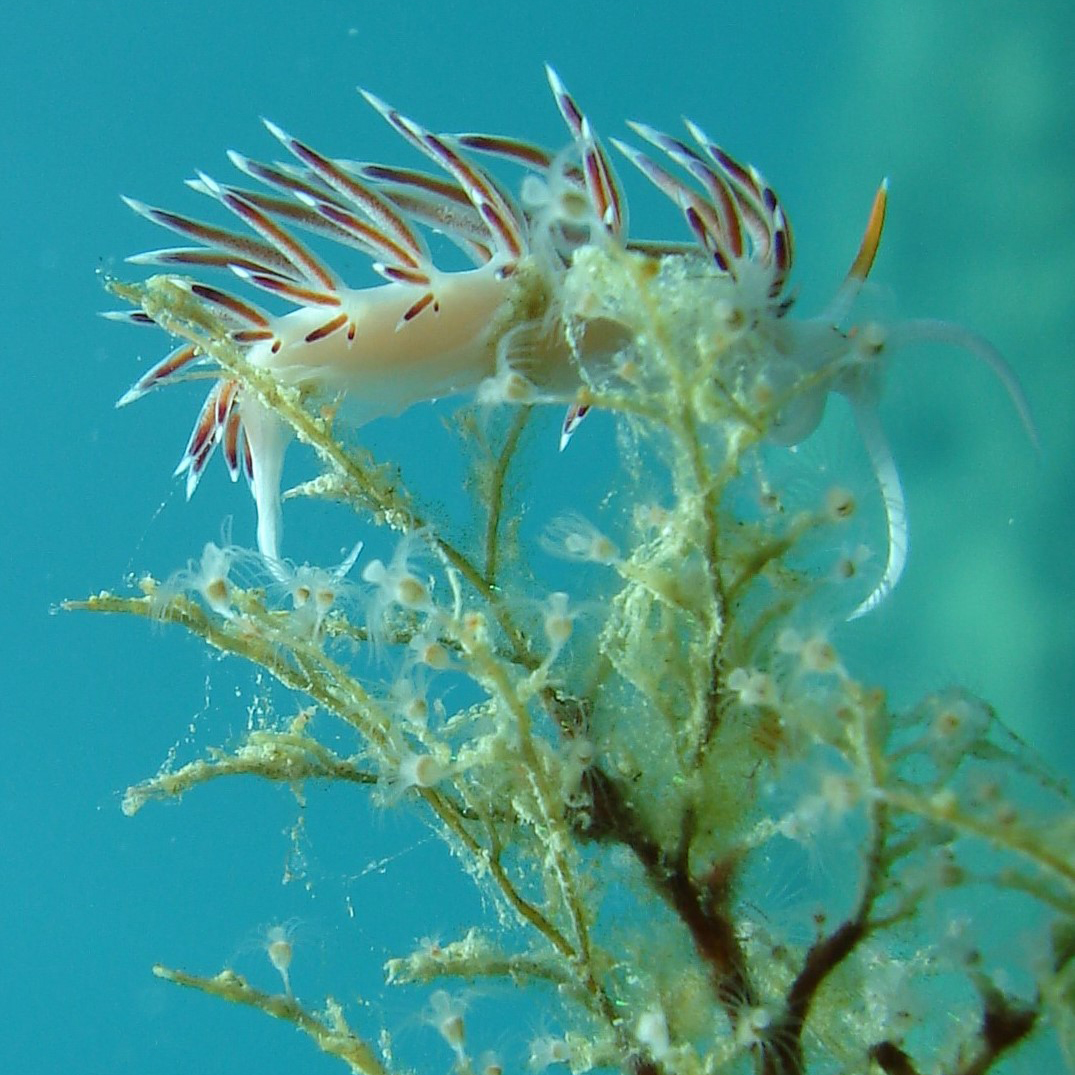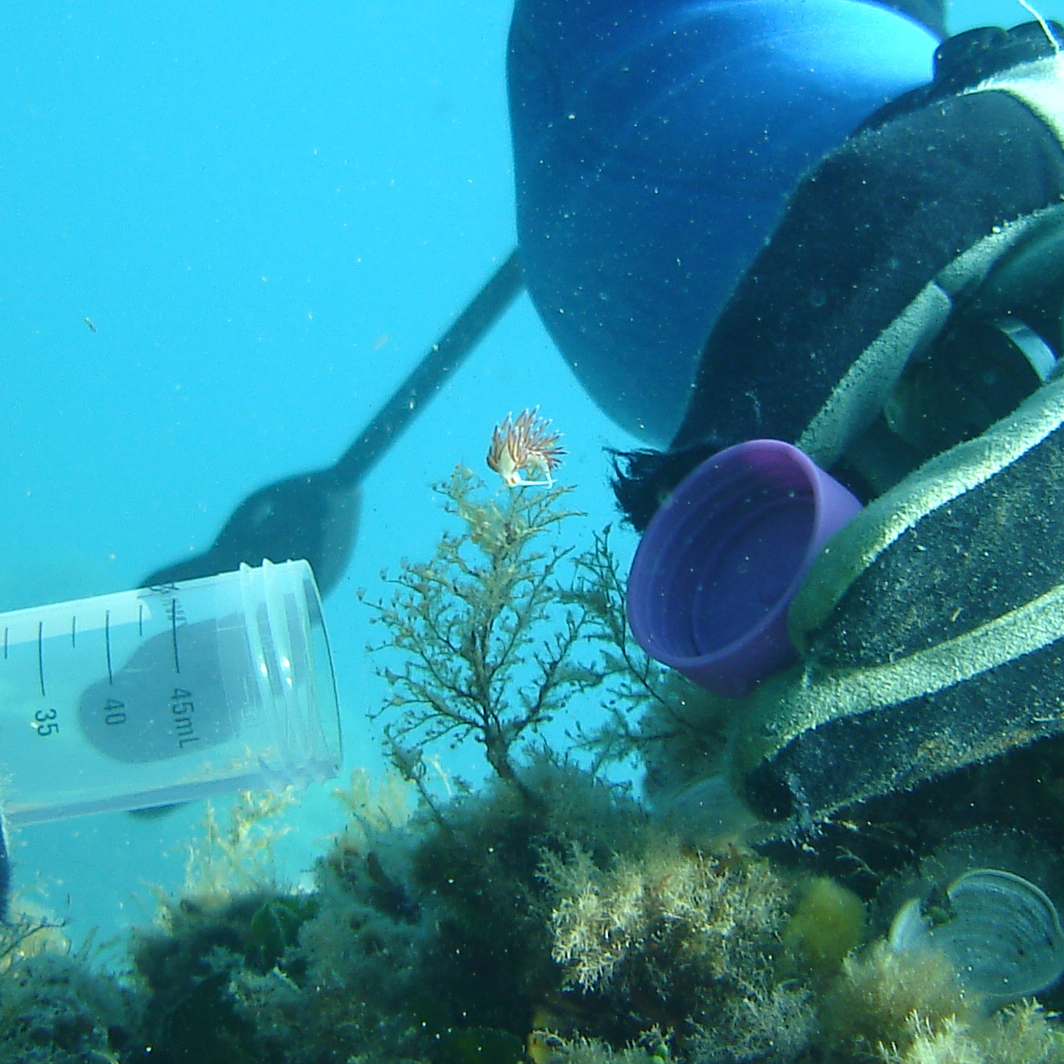A completely new type of interaction among organisms
A completely new type of interaction among organisms has been recently discovered, termed kleptopredation. It undermines some long-standing paradigms in biology, particularly in ecology but also in other sciences.
Researchers of the Stazione Zoologica Anton Dohrn in Naples, jointly with colleagues from CNR-IAMC, and the universities of Salento (Italy), Portsmouth, and Glasgow (UK) have recently described the way by which a conspicuous Mediterranean sea slug, Cratena peregrina, gets its food. The discovery has been published in the last issue of Biology Letters (Willis et al., 2017), a flagship publication of the Royal Society.
Textbooks regularly report Cratena peregrina, as well as other sea slugs, as preying on cnidarians. Indeed, this species lives on the colonies of the hydroid Eudendrium racemosum from which the sea slug pick the small polyps one after another. At a first glance, it seems to be a case of classic predation in which an organism prey upon a prey completely or in part. Eudendrium racemosum is itself a predator, with its small polyps acting as zooplankton catchers.
 As it is usually the case, there is a number of alternative takes to the relationship between a predator and its prey. Among these, cleptoparasitism consists in stealing the prey seized but someone else. Such a theft occurs without physical damage to the predator which seized the prey. Many organisms engage in such a piracy, for example when hyenas steal the prey catched by lions or leopards. The new predation mechanism described by the Italian-British team of researchers encompasses both predation and kleptoparasitism.
As it is usually the case, there is a number of alternative takes to the relationship between a predator and its prey. Among these, cleptoparasitism consists in stealing the prey seized but someone else. Such a theft occurs without physical damage to the predator which seized the prey. Many organisms engage in such a piracy, for example when hyenas steal the prey catched by lions or leopards. The new predation mechanism described by the Italian-British team of researchers encompasses both predation and kleptoparasitism.
 This was unveiled by a combination of behavioral experimentation, identification of the diet of the involved organism via analysis of the proportions of heavy isotopes of carbon and nitrogen, and advanced statistical tools.
This was unveiled by a combination of behavioral experimentation, identification of the diet of the involved organism via analysis of the proportions of heavy isotopes of carbon and nitrogen, and advanced statistical tools.
Indeed, the sea slug eats those hydroid’s polyps that are just seized zooplankton inside. The sea slug obtains thereby both the polyps and the zooplankton. In contrast, empty polyps are almost entirely ignored by the “kleptopredator”, evidencing that the target prey is the energy rich zooplankton freshly engulfed rather than the wrapping polyp.
According to the New York Times, the cute sea slug “prefers the Turducken of the Sea”, while Science magazine profiting of the publication date (October 31th) wrote “This sea slug has a trick for getting an extra treat”. For the Daily Kos, a US online magazine of politics and economics “Marine scientists discover new economic term: Kleptopredation”. The Daily Kos evidences funny coincidences between the feeding behavior of the sea slug and the Republican tax plan in the US, “...a new economic term we can add to the lexicon when describing republican economic schemes. Thanks scientists!”, they wrote. After less than a week, the media interested raised to a level that the discovery made by the SZN scientists in collaboration with CNR and the Italian-British universities is among the “trending stories” of EurekAlert, the global source for science news.










